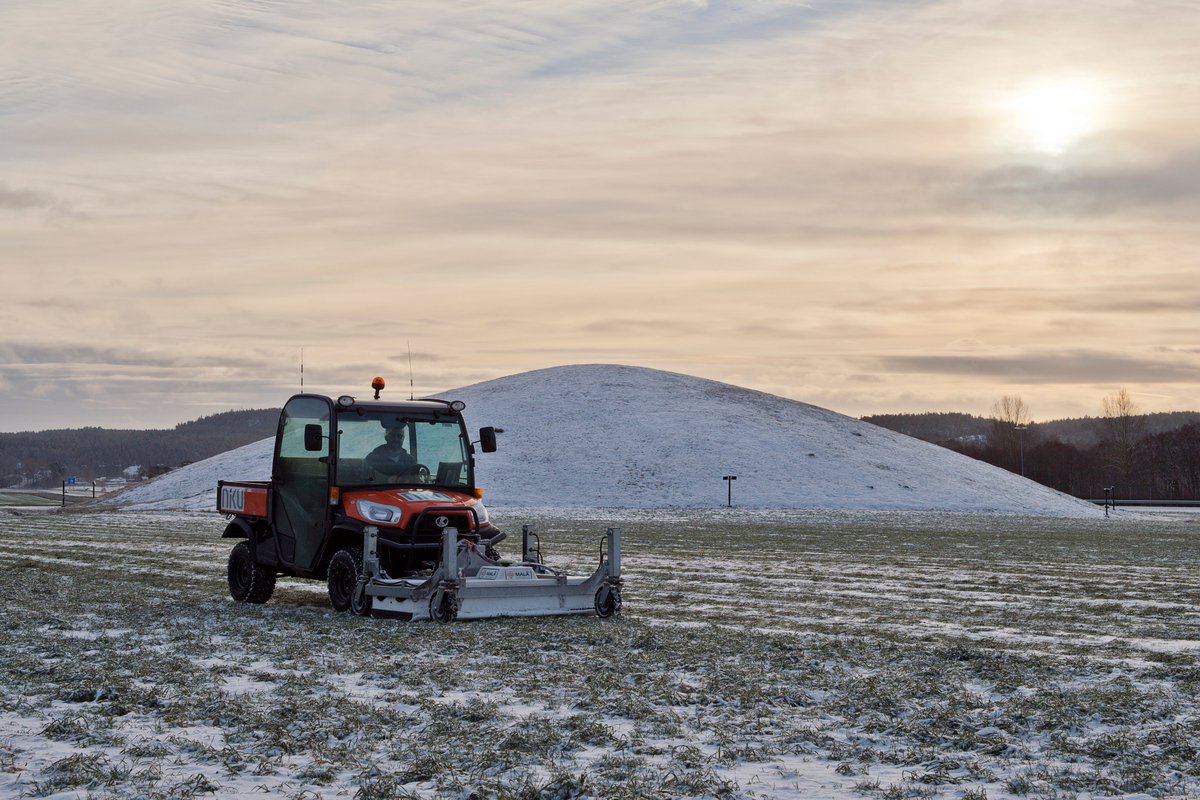
🆕 #archaeology: It has been suggested a devastating tsunami submerged Doggerland ~10,000 BC. However, new analysis reveals the lost landscape survived this catastrophe.
Here's an #AntiquityThread on research published today in Antiquity (🆓) buff.ly/3mpoPnV 1/ 🧵
Here's an #AntiquityThread on research published today in Antiquity (🆓) buff.ly/3mpoPnV 1/ 🧵

This event, known as the Storegga tsunami, was triggered by a giant submarine landslide in the North Sea ~8,150-years-ago. Over 3200 km3 of sediment was displaced. 2/
📷: The location of the landslide, by Lamiot / CC BY-SA 3.0
📷: The location of the landslide, by Lamiot / CC BY-SA 3.0

The resulting gigantic waves were a catastrophic natural disaster of a scale the region has not seen since – evidence of the tsunami has been found up to 80 km inland in 🏴 3/
📷: Tsunami sediment (grey upper layer) from Maryton on the Montrose Basin 🏴 by Stozy10 / CC BY-SA 3.0
📷: Tsunami sediment (grey upper layer) from Maryton on the Montrose Basin 🏴 by Stozy10 / CC BY-SA 3.0

The tsunami likely had a devastating impact on the human population, potentially killing thousands. 4/
It also had a lasting effect on the landscape – it has been suggested that it may have finally submerged Doggerland, which was already partially flooded by rising sea levels after the last ice age. 5/
📷: Doggerland initially versus when the tsunami hit

📷: Doggerland initially versus when the tsunami hit


However, 🆕 research by @LostFrontiersBD reveals this may not be the case. They examined the first tsunami sediment from southern Doggerland, its topography & modern events to build a better picture of the event 6/
📷: A) Evidence of the tsunami B) evidence gathered by this team
📷: A) Evidence of the tsunami B) evidence gathered by this team

This research reveals that it was devastating, with tsunami sediment found over 40 km inland in Doggerland. 7/
However, the wave would have been concentrated in valleys whilst dense forests and hills may have protected other areas. Furthermore, the Dogger bank uplands may have dissipated some of the wave’s energy. 8/
📷 Light = parts of flooded; darker = parts that survived
📷 Light = parts of flooded; darker = parts that survived

The tsunami was a catastrophe and the landscape was transformed. However, Doggerland would survive as an archipelago for centuries until it was swallowed by rising sea levels caused by climate change. 9/
📷: Doggerland at the time of the tsunami versus 1,000 years later.
📷: Doggerland at the time of the tsunami versus 1,000 years later.

Crucially, these last parts of Doggerland may still have existed at the time Neolithic farmers migrated from continental Europe and began to introduce agriculture to Britain. 10/
📷: An early Neolithic house at Kingsmead Quarry by Wessex Archaeology / CC BY-NC 2.0
📷: An early Neolithic house at Kingsmead Quarry by Wessex Archaeology / CC BY-NC 2.0

As such, the unique archaeological record of Doggerland, preserved deep beneath marine sands and water, may hold important clues this crucial moment in European prehistory. 11/
Perhaps it was a ‘staging ground’ for early farmers, an isolated region they never reached and hunter-gatherers flourished, or a unique mixing pot between them two groups. 12/
📷: Reconstruction of a hunter-gatherer camp in Britain by Wessex Archaeology / CC BY-NC 2.0
📷: Reconstruction of a hunter-gatherer camp in Britain by Wessex Archaeology / CC BY-NC 2.0

However, the opportunity to investigate this landscape could be closing fast. There are proposals for massive development in the North Sea which could jeopardise future research. 13/
The research also has more modern uses as other tsunamis have struck across the North Sea. Whilst another gigantic submarine landslide is unlikely anytime soon, this data is still vital in helping risk modellers prepare for tsunami impacts in the future. 14/14
Clearly, Doggerland still has more secrets to tell. Check out the original research 🆓 in Antiquity.
James Walker, @gaffney_v & @LostFrontiersBD et al. 'A great wave: the Storegga tsunami and the end of Doggerland?' doi.org/10.15184/aqy.2…
James Walker, @gaffney_v & @LostFrontiersBD et al. 'A great wave: the Storegga tsunami and the end of Doggerland?' doi.org/10.15184/aqy.2…

• • •
Missing some Tweet in this thread? You can try to
force a refresh




